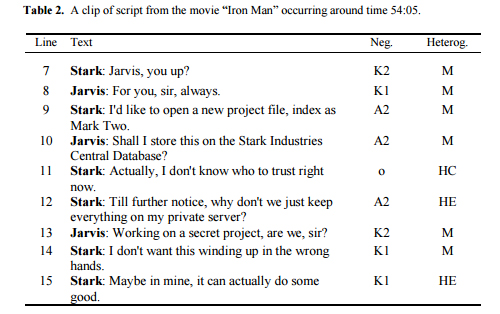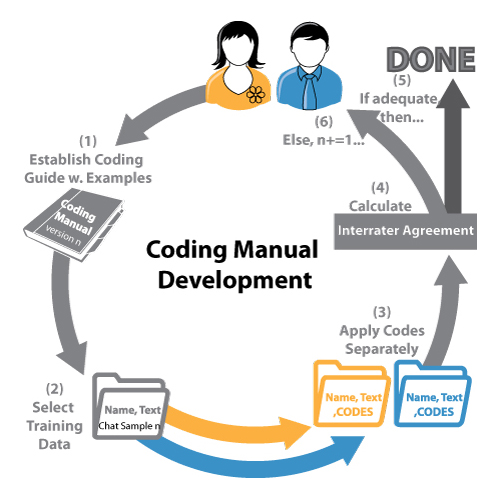Operationalizing Sociolinguistics for Insights into Social Positioning

Description
Linguistic behaviors in group work positions individuals in such a way as to increase or decrease their opportunities to engage and learn in educational settings. In this large body of work I present a multi-dimensional linguistic framework derived from sociolinguistics for identifying social positioning through language choices.
Authoritativeness or the Negotiation Framework is our research group's operationalization of the concept from Systemic Functional Linguistics. Authoritativeness is demonstrated by making a contribution to a conversation that is not meant to be validated by another group member. Our work has resulted in a reliable coding manual for Authoritativeness with the following codes:
- K1 (Primary Knower), when the speaker considers herself to be the primary authority on an expressed piece of knowledge (i.e., source of the knowledge)
- K2 (Secondary Knower), when the speaker asks for knowledge from someone of higher authority (i.e., knowledge sink)
- A1 (Primary Actor), for contributions that display that one can perform a particular action.
- A2 (Secondary Actor), contributions instructing someone else to do an action
- ch (Challenge), in which a speaker rejects the authority of the previous speaker to make the previous move
- o (Other), which encapsulates all other moves that do not fit in the five described above.
In Line 7 of Table 2 above, we see that Stark asks if Jarvis is awake, which indicates that he is not the Primary Knower. Jarvis is the source of that knowledge (K1, Line 8). Stark asks Jarvis to perform some actions in Lines 9, 10, and 12 which positions him as the Secondary Actor (A2).
Our Heteroglossia Framework is based on Martin & White's Engagement Framework: once again, another operationalization of a concept for Systemic Functional Linguistics. It is intended to denote the identification of word choice that allows or restricts other possibilities and opinions. Think of it as a little like "hedge words", although considerably more complex as we created a reliable coding framework to identify heteroglossia. The Heteroglossia Framework has a rather simple divide in possible coding terms for contributions:
- Heteroglossic-Expand (HE) phrases make allowances for alternative views and opinions (ex: "She claimed that usability heuristics are great.")
- Heteroglossic-Contract (HC) phrases thwart other positions (ex: "She demonstrated that usability heuristics are great.")
- Monoglossic (M) phrases make no mention of other views and viewpoints (ex: "Usability heuristics are great.")
Line 12 of Table 2 above is particularly interesting from a Heteroglossia and User Interface standpoint. "Till further notice, why don't we just keep everything on my private server?" is a command to Jarvis (as indicated by the Neg:A2 code), but it is also Heteroglossic-Expand. So it is not a direct command. This nuanced phrasing makes designing naturalistic dialogue interfaces, like Jarvis, challenging.
These examples were adapted from those in our paper, Modeling the Rhetoric of Human-Computer Interaction. Considerable more detail is provided in the documentation below.
Documentation
Overview & Automation
Howley, I., Mayfield, E., & Rose, C. P. (2012). Linguistic analysis methods for studying small groups. The International Handbook of Collaborative Learning.
Applications to HCI
Howley, I., & Rose, C. P. (2011). Modeling the rhetoric of human-computer interaction. In Human-Computer Interaction. Interaction Techniques and Environments (pp. 341-350). Springer Berlin Heidelberg.
Collective self-efficacy behavioral measure
Howley, I., Mayfield, E., & Rose, C. P. (2011). Missing something? Authority in collaborative learning. In Proceedings of Computer Supported Collaborative Learning.
